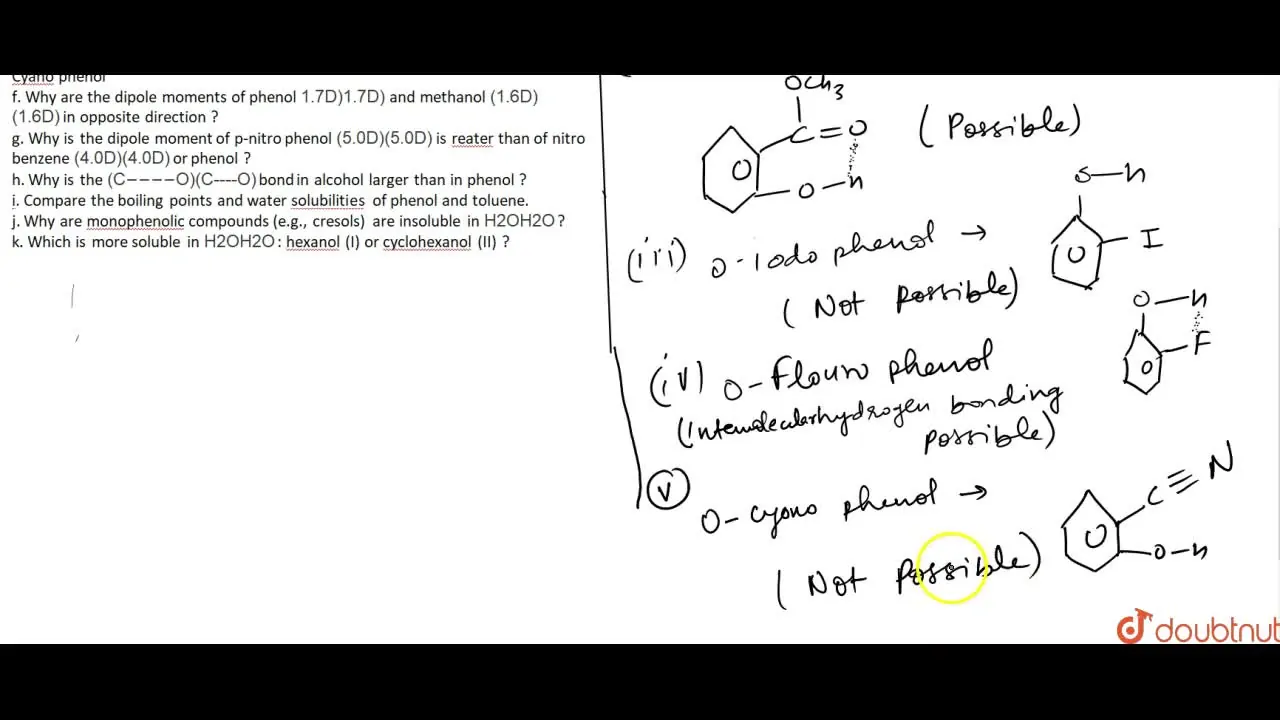Which has higher boiling point ?
(I) Phenol (II) Benzenethiol
b. Which has higer melting point ?
(I) Hydroquinone (II) Catechel
c. Explain the less solubility and lower boiling point of:
(I) 0-Nitrophenol
(II) 0-Hydroxy benzaldehyde
(III) 0-Hydroxybenozioc acid (salicylic acid) compared with their p- and m- isomers.
d. Which isomer (o, m-, or p) of hydroxy acetophenone is steam volatile ?
e. Which of the following shows chelation ?
(I) 0-Cresol (II) Oil of wintergreen (III) 0-lodo phenol (IV) 0-Fluoro phenol (V) 0-Cyano phenol
f. Why are the dipole moments of phenol 1.7D) and methanol (1.6D) in opposite direction ?
g. Why is the dipole moment of p-nitro phenol (5.0D) is reater than of nitro benzene (4.0D) or phenol ?
h. Why is the (C−−−−O) bond in alcohol larger than in phenol ?
i. Compare the boiling points and water solubilities of phenol and toluene.
j. Why are monophenolic compounds (e.g., cresols) are insoluble in H2O ?
k. Which is more soluble in H2O : hexanol (I) or cyclohexanol (II) ?
a. Although the molecular mass of benzenethiol (Ph−−−SH) is higher, phenol has boiling point. It is because there is no H-bonding in PhSH.
b. Hydroquinone 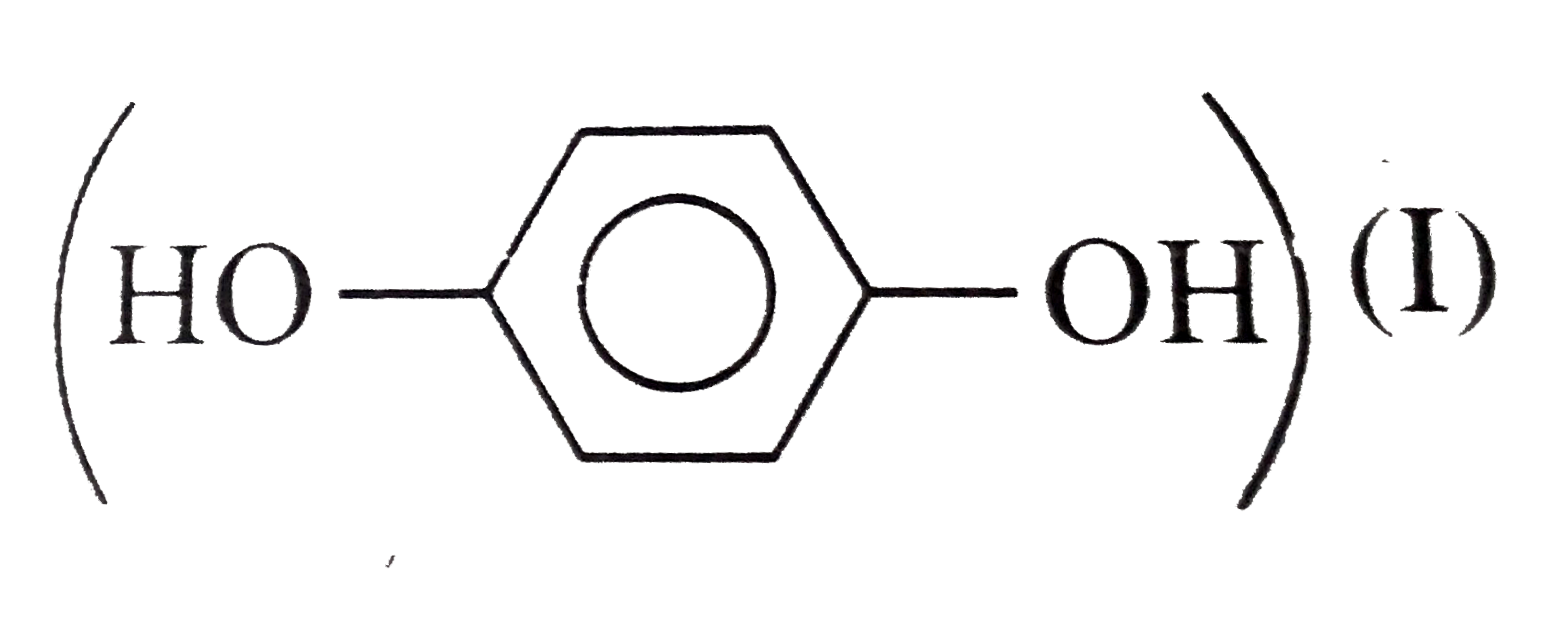 (I) has high melting point than catechol
(I) has high melting point than catechol 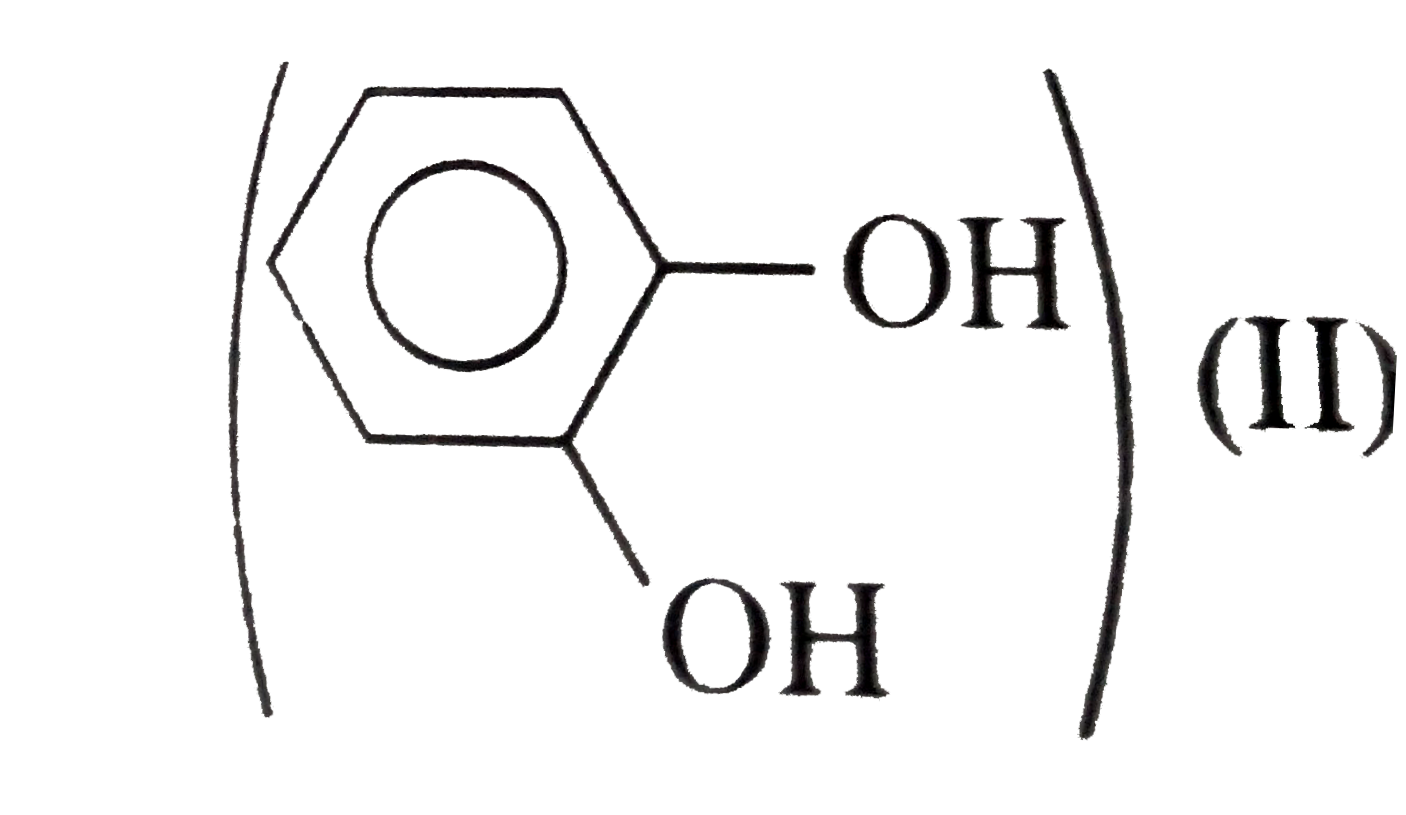 (II), because of the symmetrical packing of p-isomers of (I), (II), and (III), intramolecular H-bonding (chelation) occurs which inhibits the intermolecular attraction between these molecules and thus lowers the boiling point and also reduces H-bonding of tehes molecules with H2O, thereby, decreases water solubility. Intramolecular chelation does not occur in p- and m- isomers.
(II), because of the symmetrical packing of p-isomers of (I), (II), and (III), intramolecular H-bonding (chelation) occurs which inhibits the intermolecular attraction between these molecules and thus lowers the boiling point and also reduces H-bonding of tehes molecules with H2O, thereby, decreases water solubility. Intramolecular chelation does not occur in p- and m- isomers.
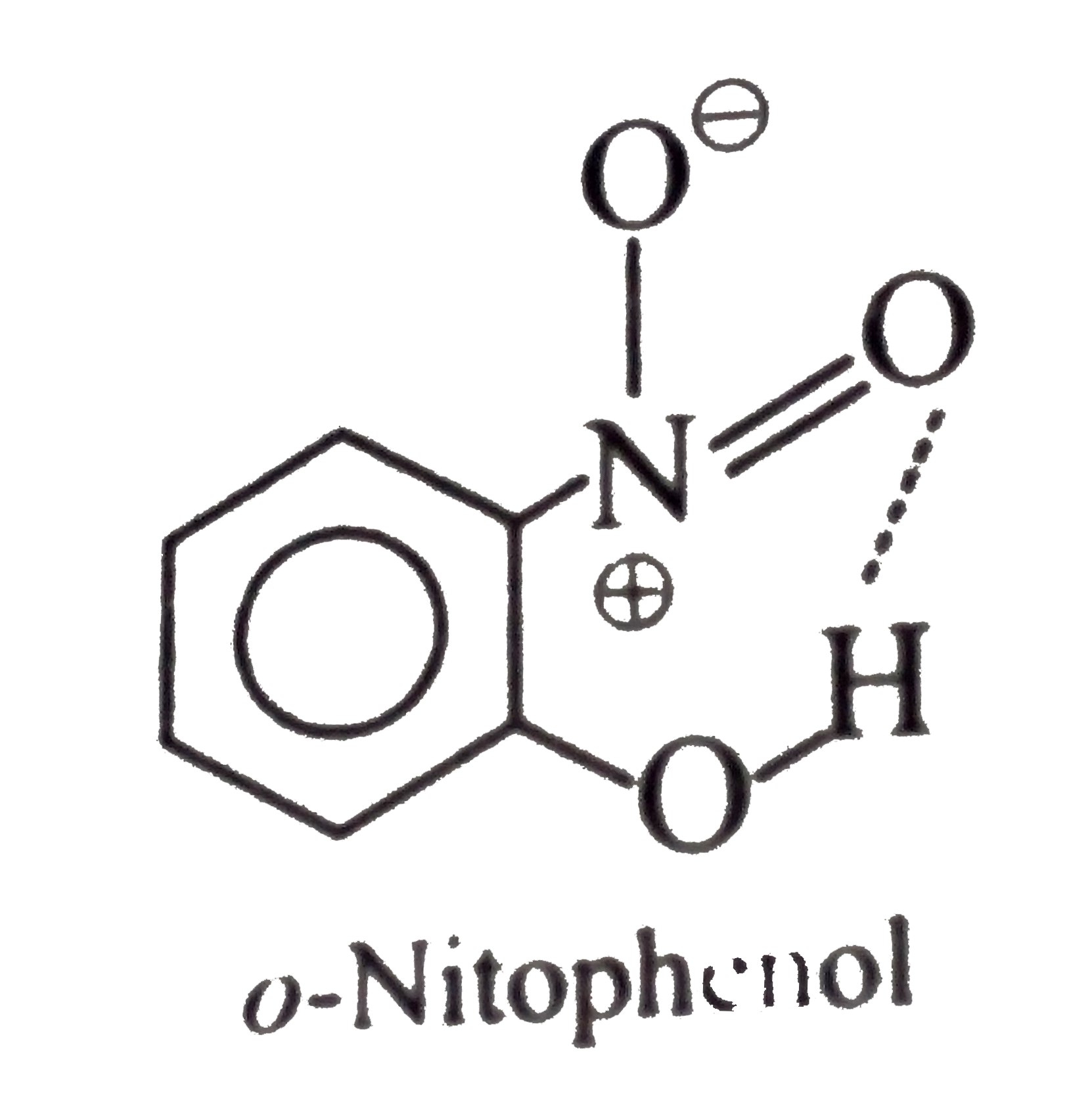
d. Chelated o-isomers have a minimum attraction with H2O, and they are steam volatile or steam distills. Steam volatile or steam distills are the compounds which are mixed with boiling H2O but not dissolved. On passing steam to such boiling mixture, steam carries the compound with it.
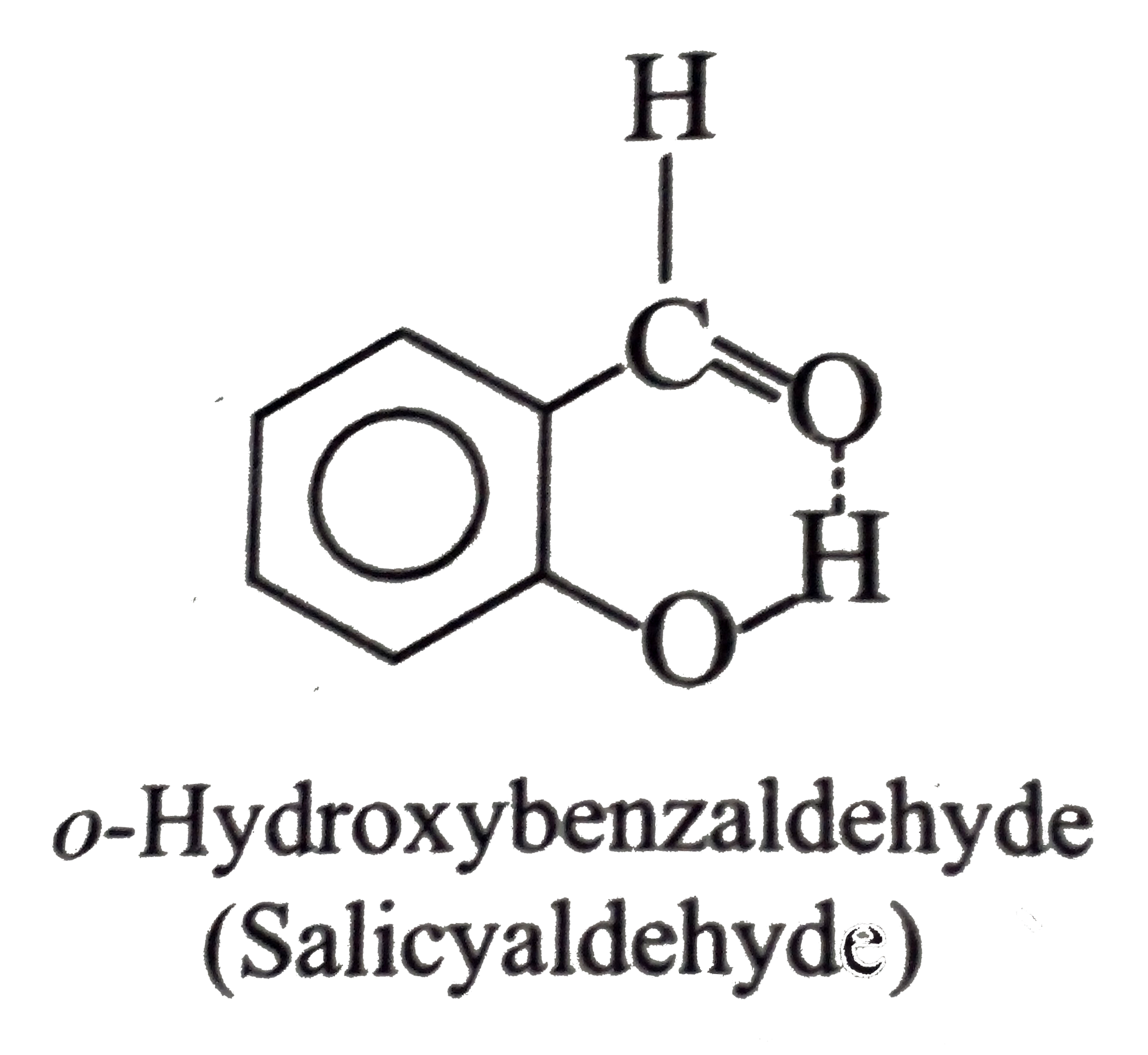
e. Chelation occurs only in (II) and (IV).
(II) Oil of wintergreen is methyl salicylate 
(IV) 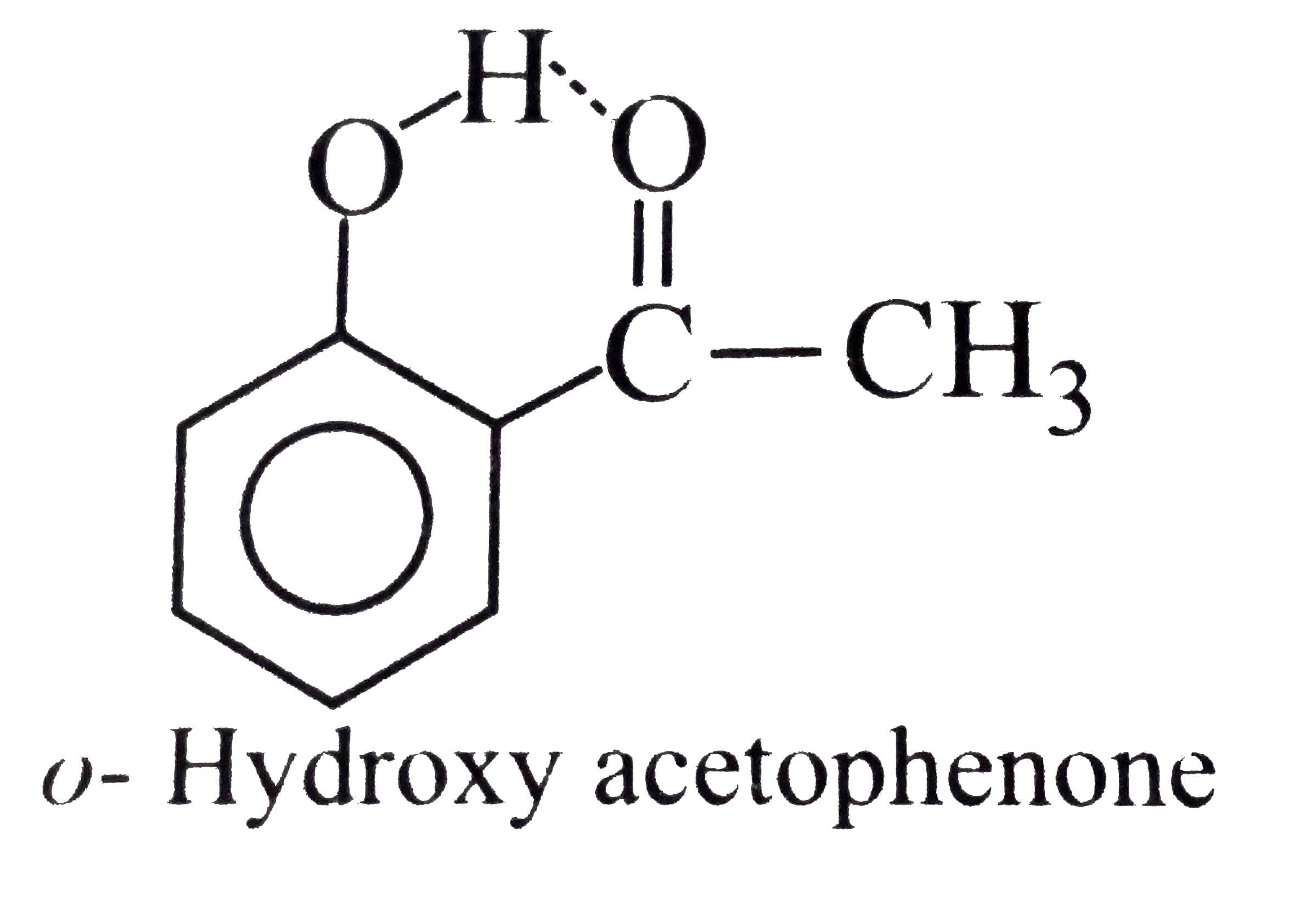 (Not possible.) H-bonding is formed
(Not possible.) H-bonding is formed
(I) 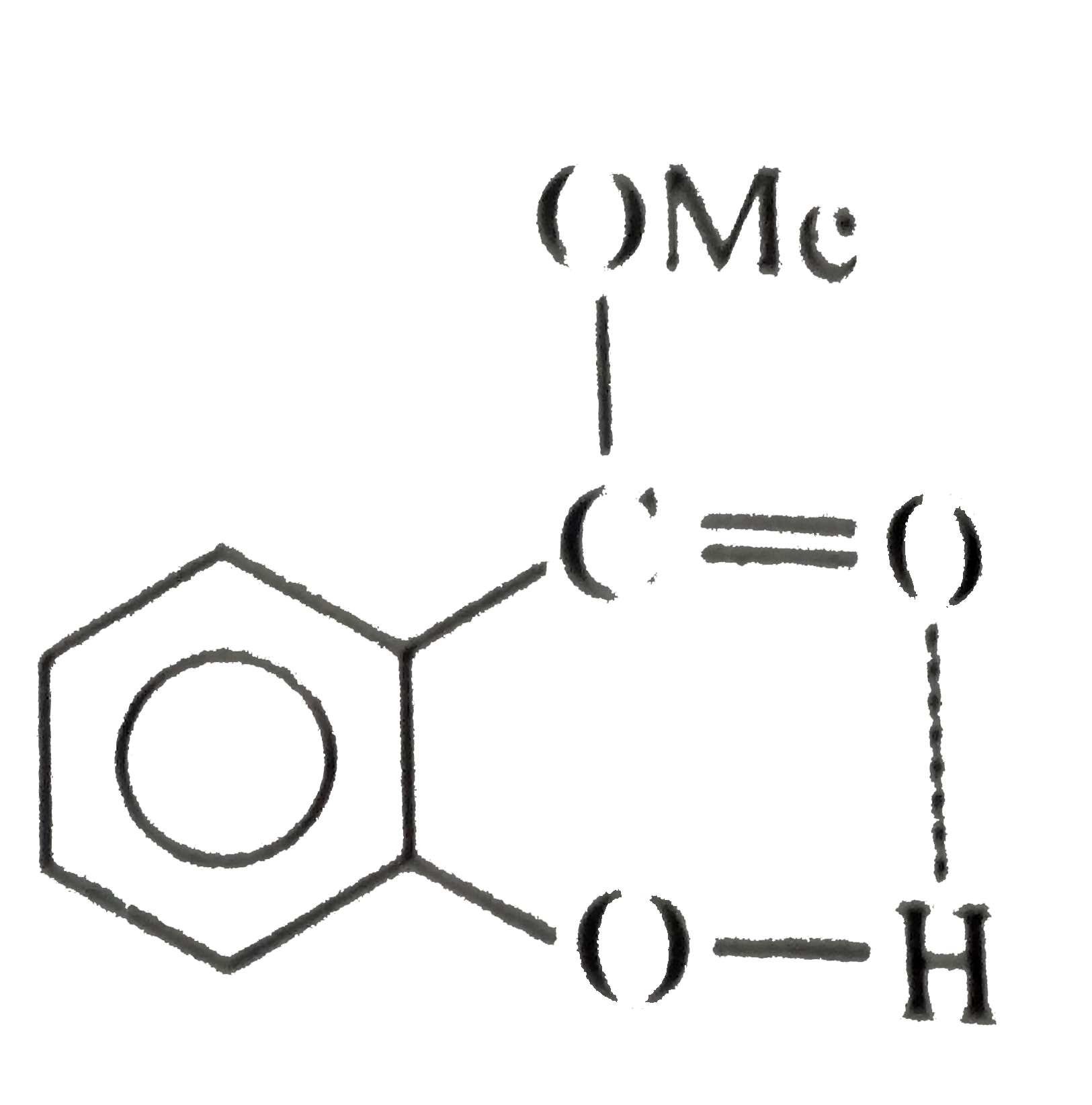 with EN elements such as F, O, N, and sometimes with CI, but not with C. of CH3 group.
with EN elements such as F, O, N, and sometimes with CI, but not with C. of CH3 group.
(III)  (Not possible.) EN of I not sufficient to form H-bonding.
(Not possible.) EN of I not sufficient to form H-bonding.
(V) 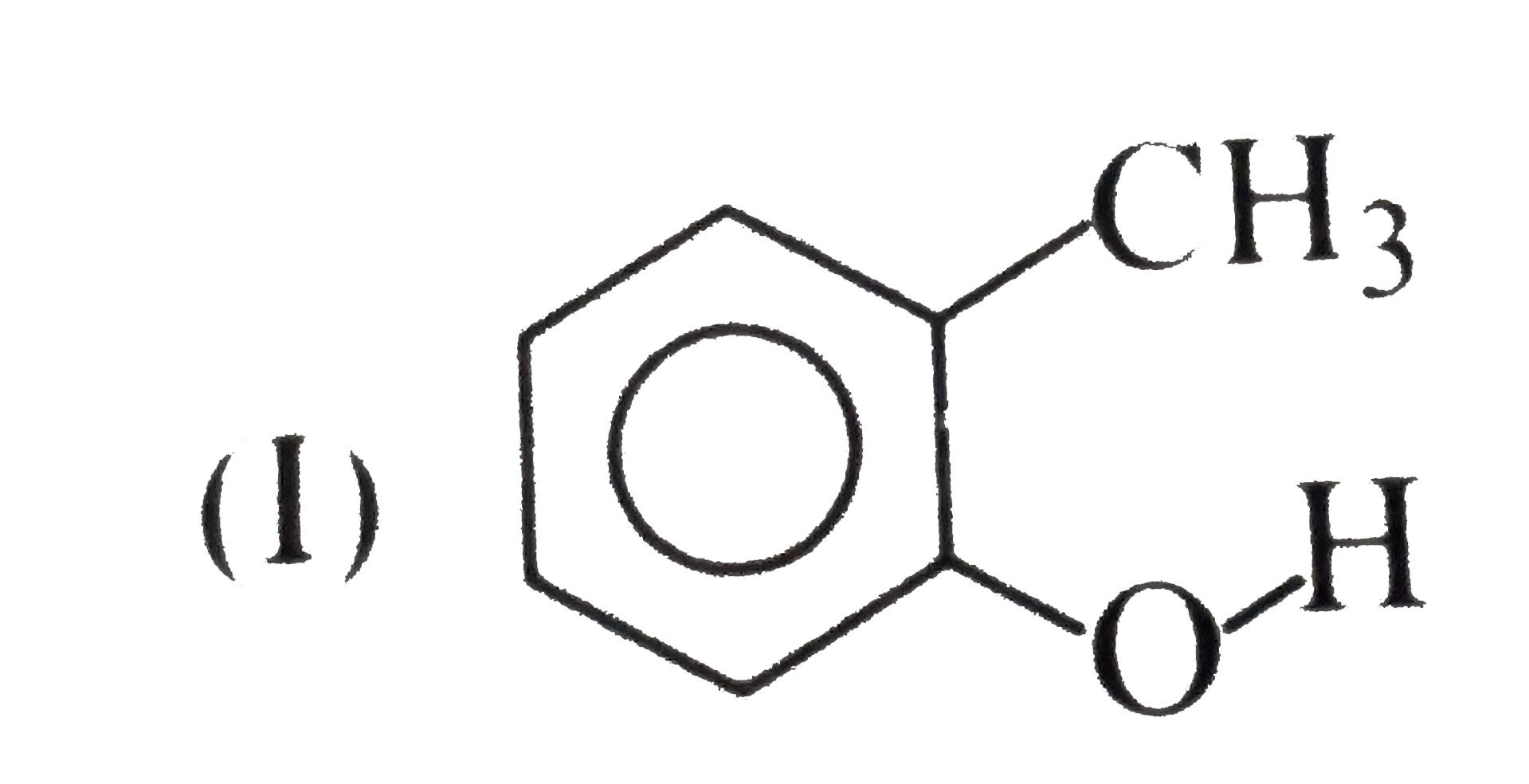 (Not possible.) Although EN of N is high for the formation of H-bonds, but the (C≡N) group is linear and is far away form the (OH) group.
(Not possible.) Although EN of N is high for the formation of H-bonds, but the (C≡N) group is linear and is far away form the (OH) group.
Therefore, H-bonding cannot occur.
f. Due to resonance, O of phenol acquires positive charge and is the positive end of dipole. However, in methanol, due to strongly EW electronegative, O acquires negative charge and is the negative end of molecular dipole.

g. 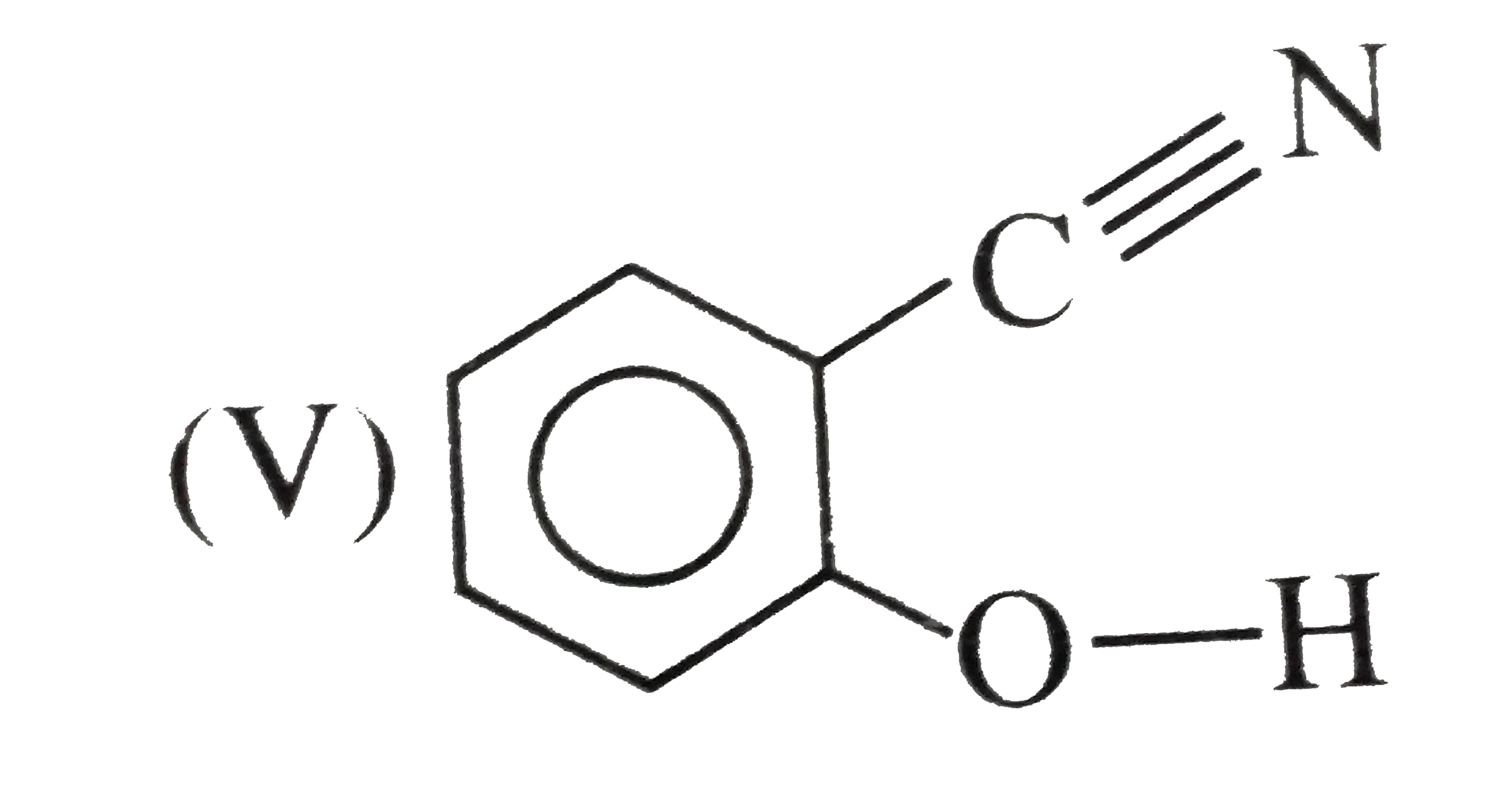
The ¯e - donating power by the resonance of (OH) group and ¯e -withdrawing power (-I and -R) of (NO2) group in (III) are in the same direction, so net vector is more than (I) and (II).
μ order: III>I>II
(.:−−I effect of (−−−−NO2 gt (−−−OH) group.)
h. See Section 12.4
i. Boiling point as well as water solubililty of phenol (181.6∘C) is greater than that of toluene (110.5∘C) because of intermolecular H-bonding.
j. The increase in molecular mass and large non-polar part (hydrophobic) dominate over the solubilising effect of H-bonding.
k. 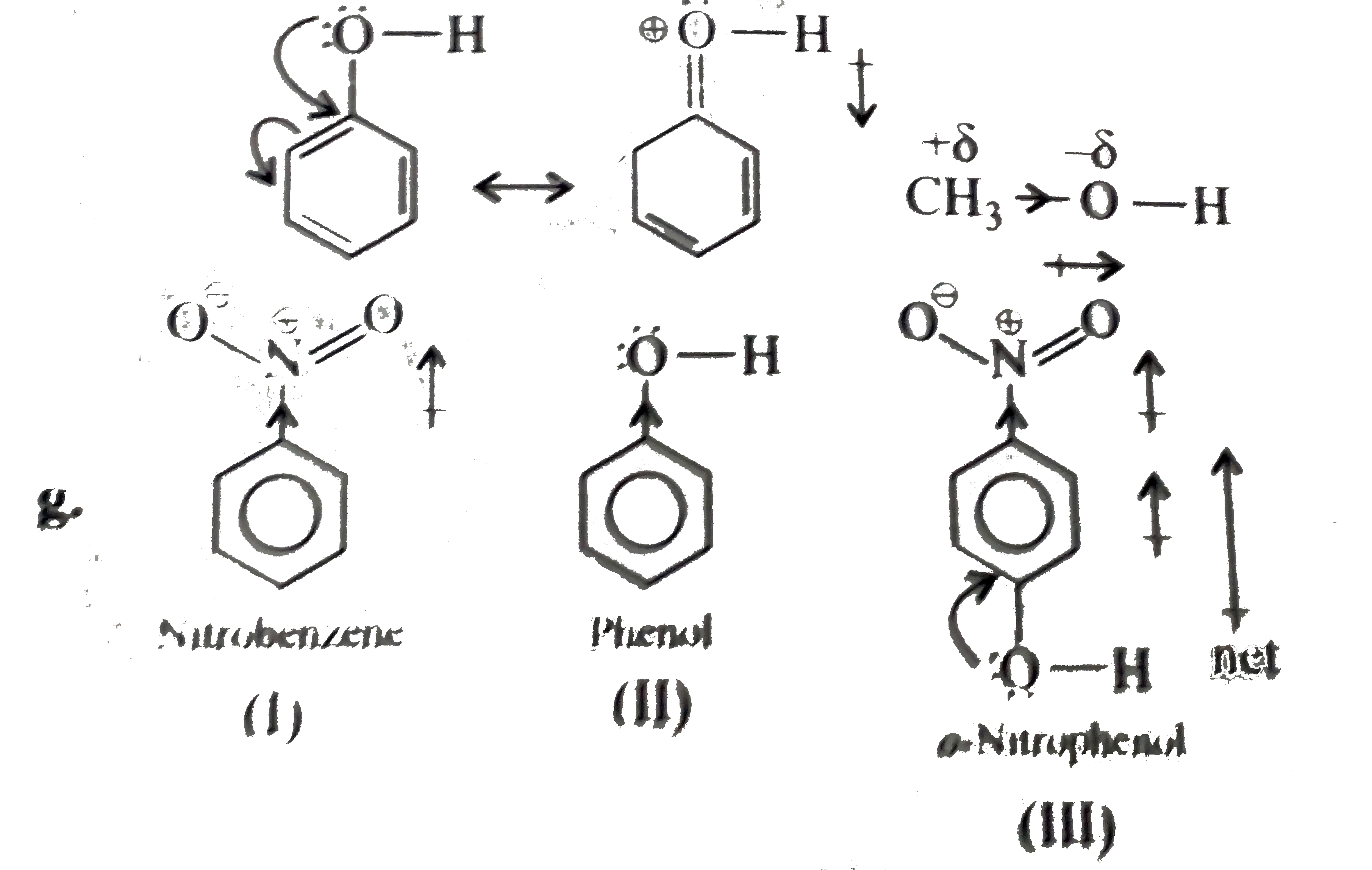
The alkyl group (R) in (II) is more compact than in (I) and hence (OH) group is more exposed and available for H-boinding with H2O. In other words, (II) has less surface area than (I), and hence more solubility.
Related Playlists
- BOOK - CENGAGE CHEMISTRYCHAPTER - ALCOHOL,PHENOL AND ETHERSEXERCISE - Solved Examples17videos
ALCOHOL,PHENOL AND ETHERS
- BOOK - CENGAGE CHEMISTRYCHAPTER - ALCOHOL,PHENOL AND ETHERSEXERCISE - Exercises Subjective25videos
ALCOHOL,PHENOL AND ETHERS
- BOOK - CENGAGE CHEMISTRYCHAPTER - ALIPHATIC AND AROMATIC ALDEHYDES AND KETONESEXERCISE - Archives Subjective29videos
ALIPHATIC AND AROMATIC ALDEHYDES AND KETONES
Similar Questions
Which isomer will have higher boiling point ?
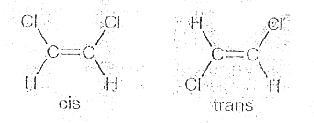 View Solution
View SolutionWhich isomer will have a higher boiling point?
 View Solution
View SolutionWhich has higher b.p.?
(a). Phenol
(b). BenzenethiolView SolutionThe boiling point of p−nitrophenol is higher than that of o−nitrophenol because.
View SolutionThe boiling point of p−nitrophenol is higher than that of o−nitrophenol because.
View Solutionwhich of the following has highest melting and boiling point ?
View SolutionWhich of the following isomer has lowest boiling point ?
View SolutionThe decreasing order of acidic character of the following is :
(I) p-Nitrophenol
(II) o-Nitrophenol
(III) m-Nitrophenol
(IV) Phenol.View SolutionWhich of the following isomer has the highest melting point:
View SolutionWhich of the following has the highest melting and boiling point?
View Solution

